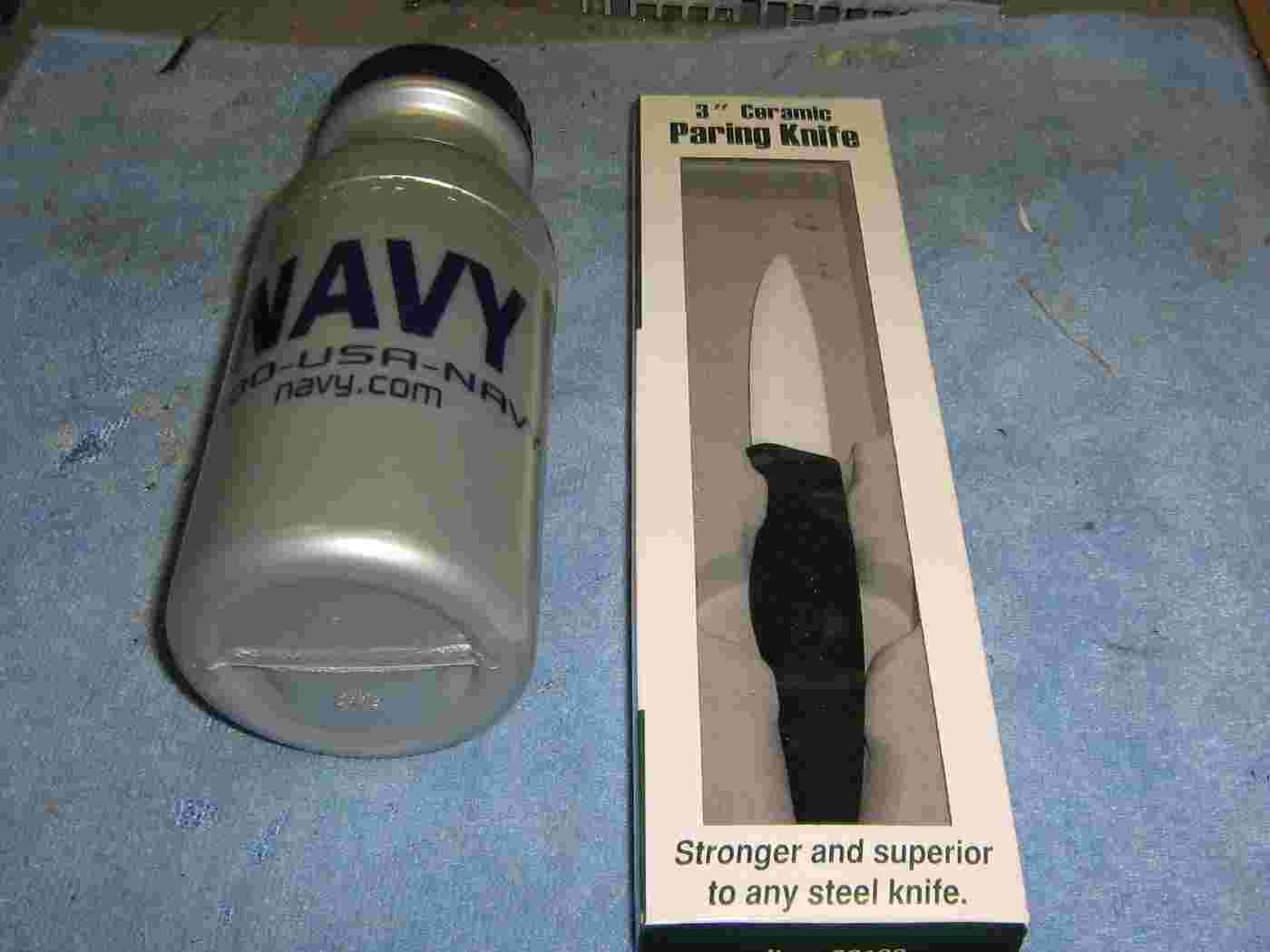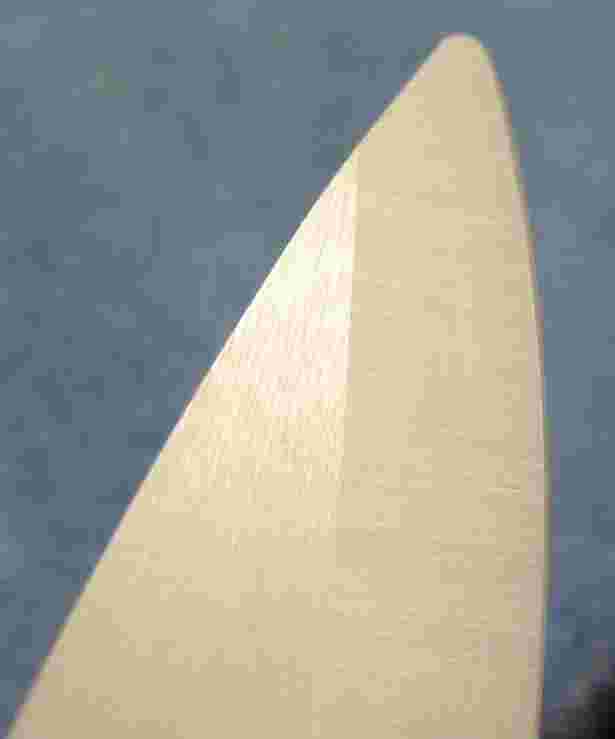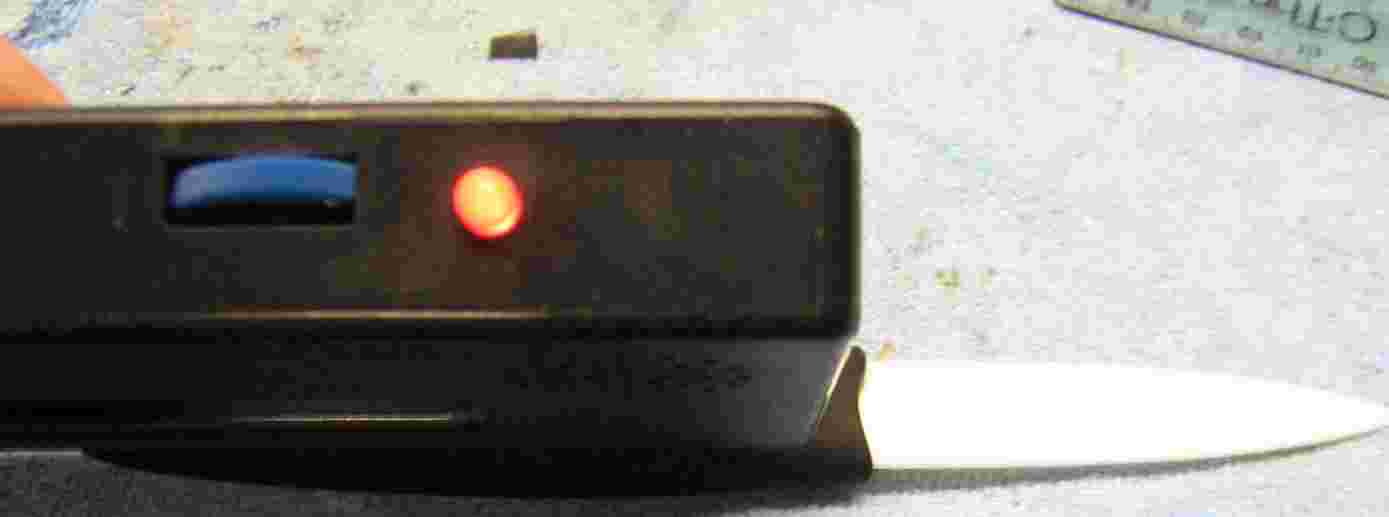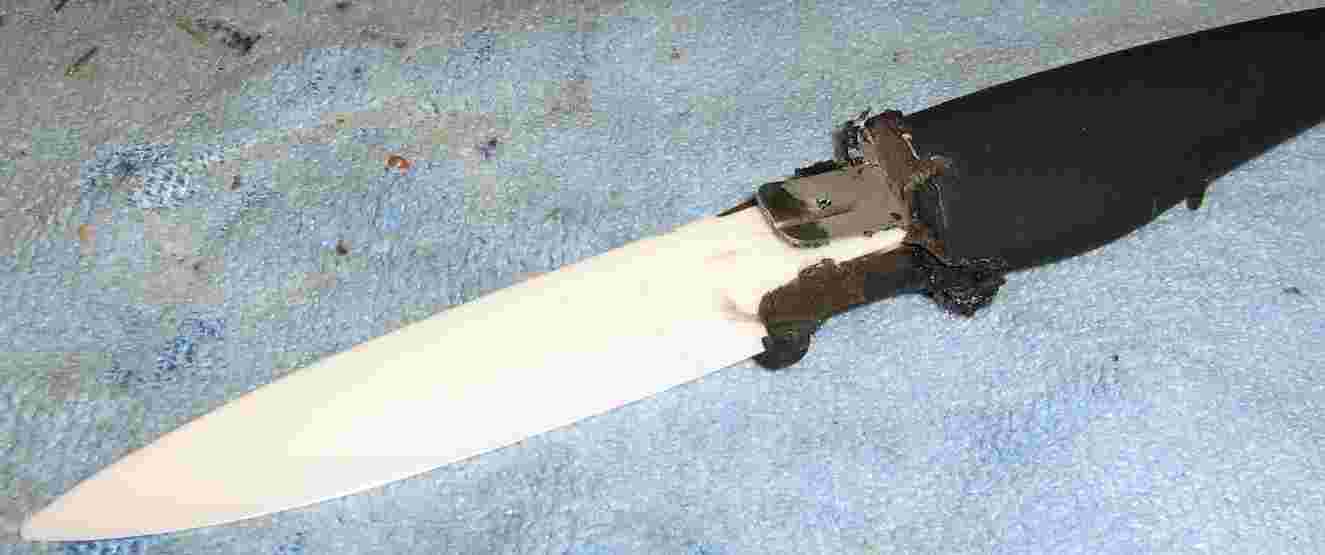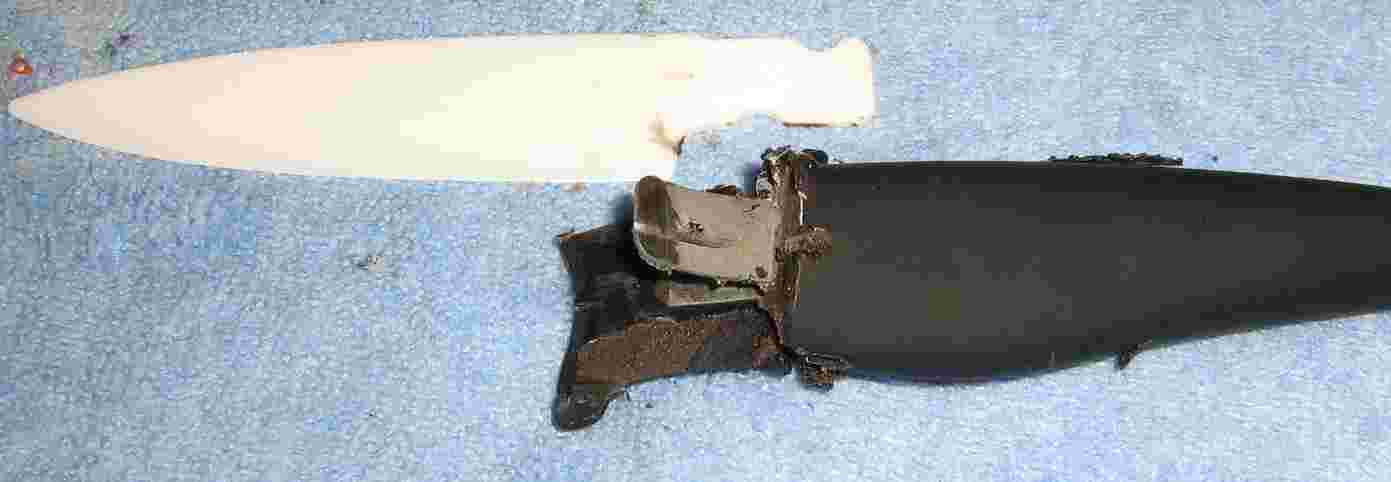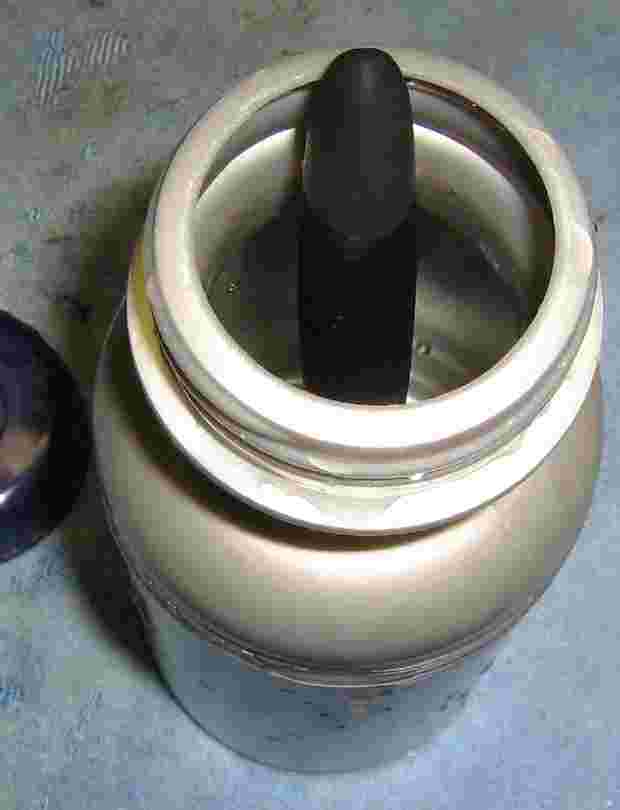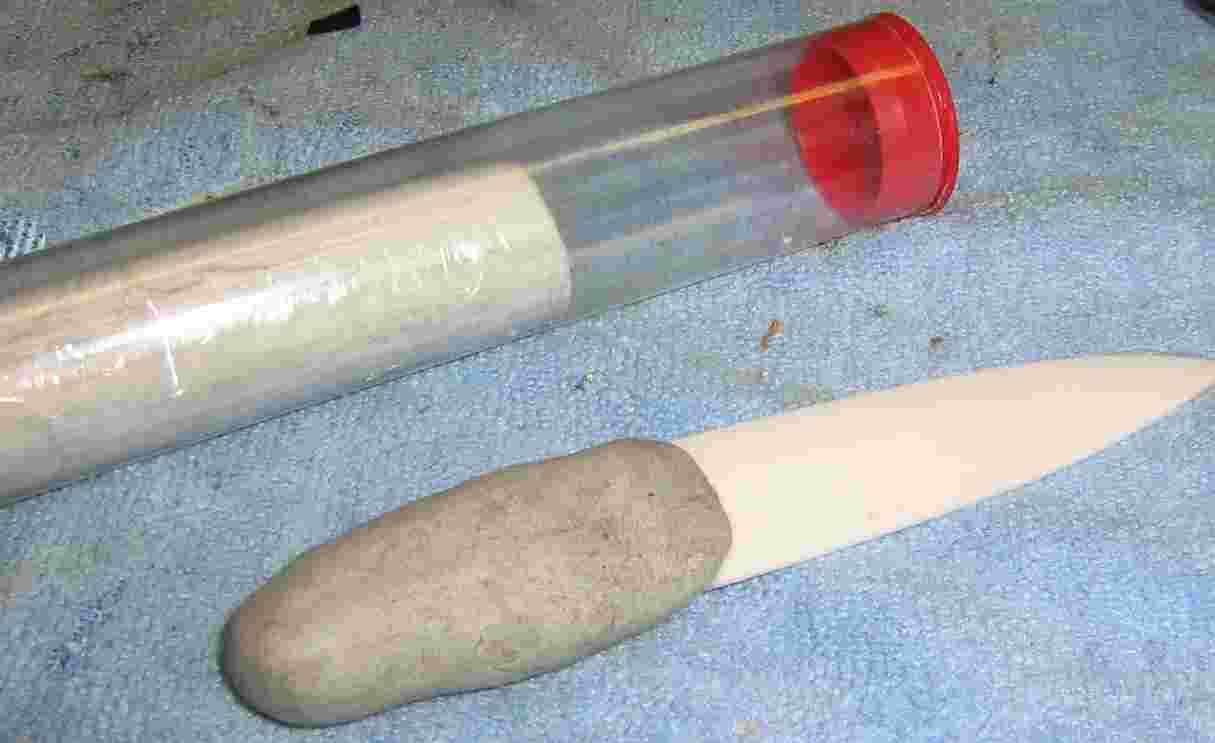For this experiment, we'll be using the 3" Ceramic Paring Knife from Harbor Freight Tools (Item #98183).
An old water bottle will make a convenient concealed carrying case.
The stock knife's overall length is around seven inches, with the blade being three inches long.
The stock blade could use a good sharpening.
You can sharpen ceramic blades using a diamond stone, but the edge will tend to become brittle and can chip or crack. You may also want to grind the tip to a much sharper point. Dremel "diamond" grinding stones will be perfect for this.
A quick pass with a simple metal detector shows our knife isn't entirely made out of plastic and ceramic...
A little work with a Dremel cut-off disk reveals two metal strips running down the length of the handle with the blade secured between them.
You'll want to carefully remove the blade and discard the handle.
Note that the base of the ceramic blade can be turned into a ceramic flat-blade screwdriver with just a little bit of grinding.
One of ZOG's latest tools is using the natural millimeter wave radiation the human body emits to passively "illuminate" concealed objects. The human body emits this radiation at around 95 GHz and any objects you may be concealing will attenuate the radiation output. This process works sorta like a "reversed" X-ray machine.
The concept behind millimeter wave imaging is to easily (and remotely) detect hidden non-metallic objects - like plastic explosives - and, yes, even ceramic knives.
What they don't want you to know is that millimeter waves can not pass through alot of water.
Make a little tube out of reflective Mylar to conceal the knife if you need to use a clear plastic water bottle.
To help improve you knife's resistance to metal detectors, you may wish to customize your own handle from non-metallic substances.
Two-part epoxy putty, like that used for quick radiator or water pipe repairs, appears to work just fine.
